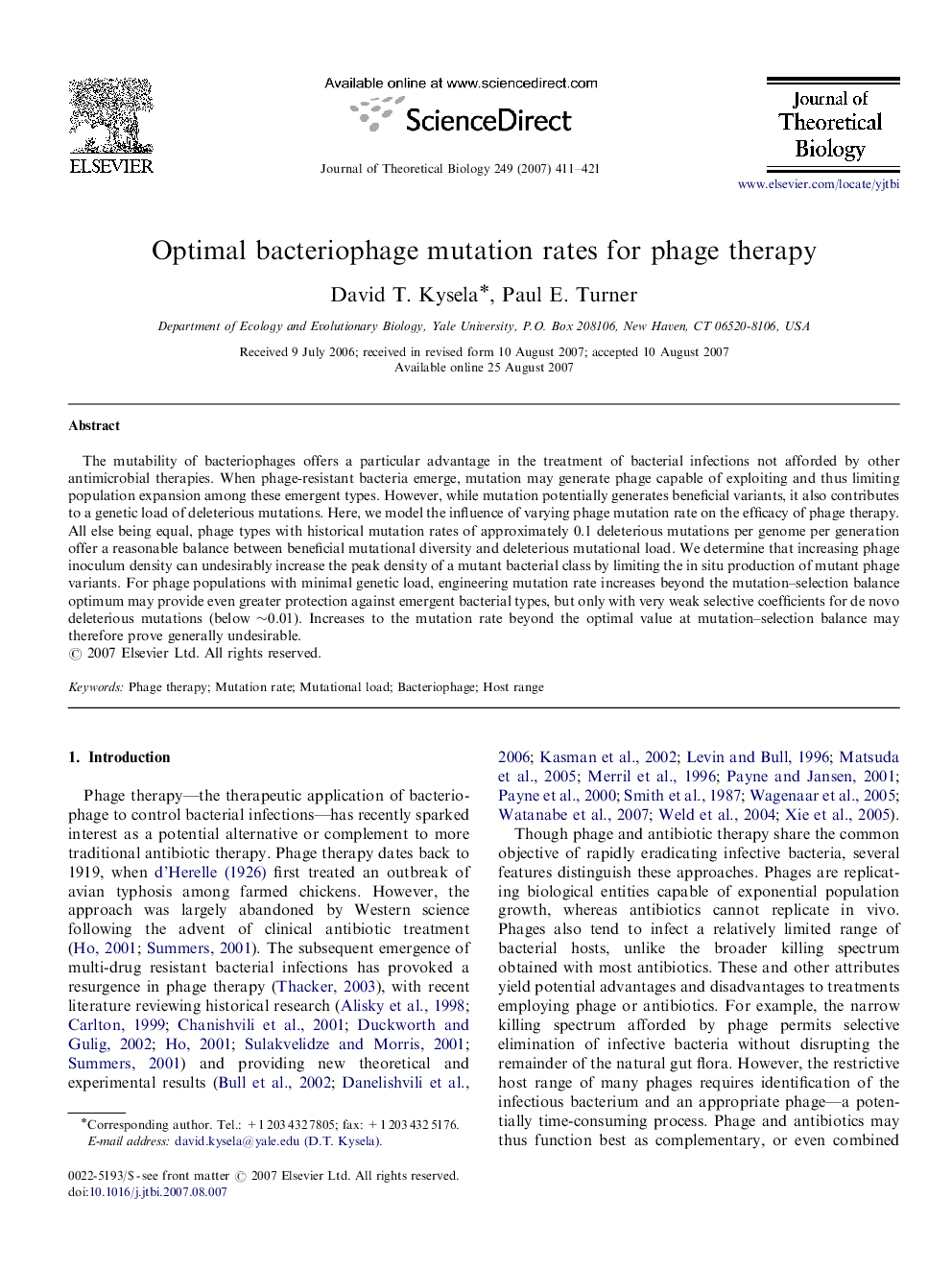| Article ID | Journal | Published Year | Pages | File Type |
|---|---|---|---|---|
| 4498860 | Journal of Theoretical Biology | 2007 | 11 Pages |
The mutability of bacteriophages offers a particular advantage in the treatment of bacterial infections not afforded by other antimicrobial therapies. When phage-resistant bacteria emerge, mutation may generate phage capable of exploiting and thus limiting population expansion among these emergent types. However, while mutation potentially generates beneficial variants, it also contributes to a genetic load of deleterious mutations. Here, we model the influence of varying phage mutation rate on the efficacy of phage therapy. All else being equal, phage types with historical mutation rates of approximately 0.1 deleterious mutations per genome per generation offer a reasonable balance between beneficial mutational diversity and deleterious mutational load. We determine that increasing phage inoculum density can undesirably increase the peak density of a mutant bacterial class by limiting the in situ production of mutant phage variants. For phage populations with minimal genetic load, engineering mutation rate increases beyond the mutation–selection balance optimum may provide even greater protection against emergent bacterial types, but only with very weak selective coefficients for de novo deleterious mutations (below ∼0.01). Increases to the mutation rate beyond the optimal value at mutation–selection balance may therefore prove generally undesirable.
